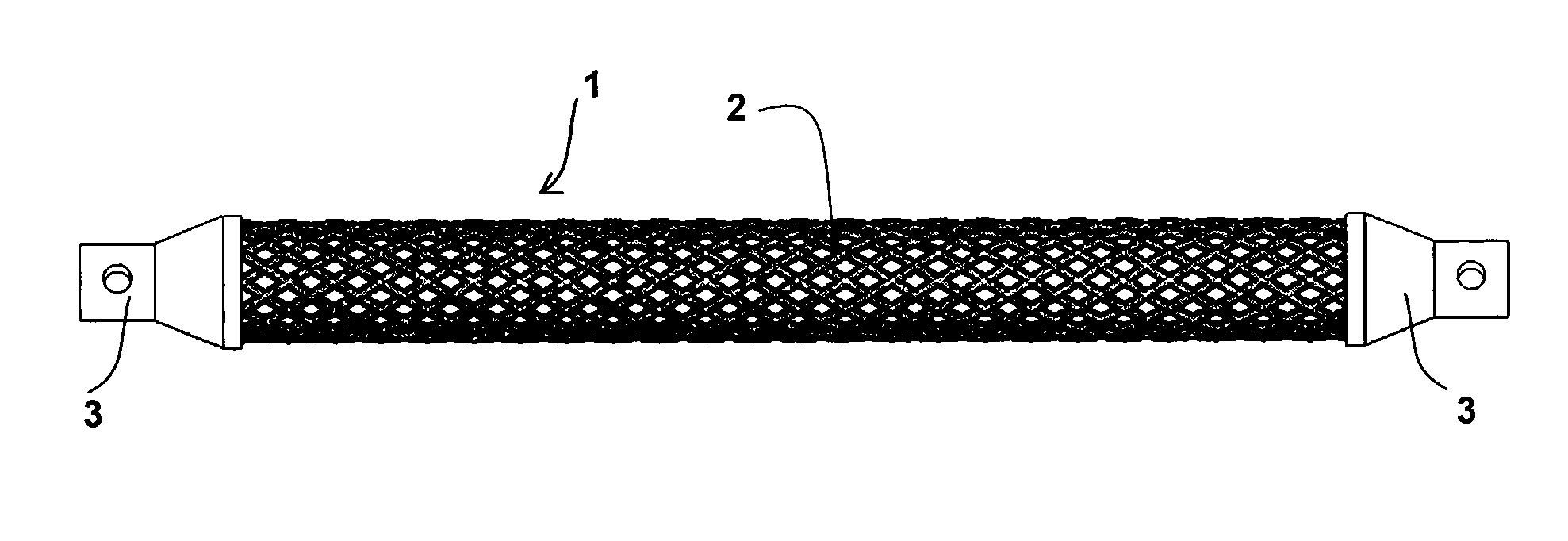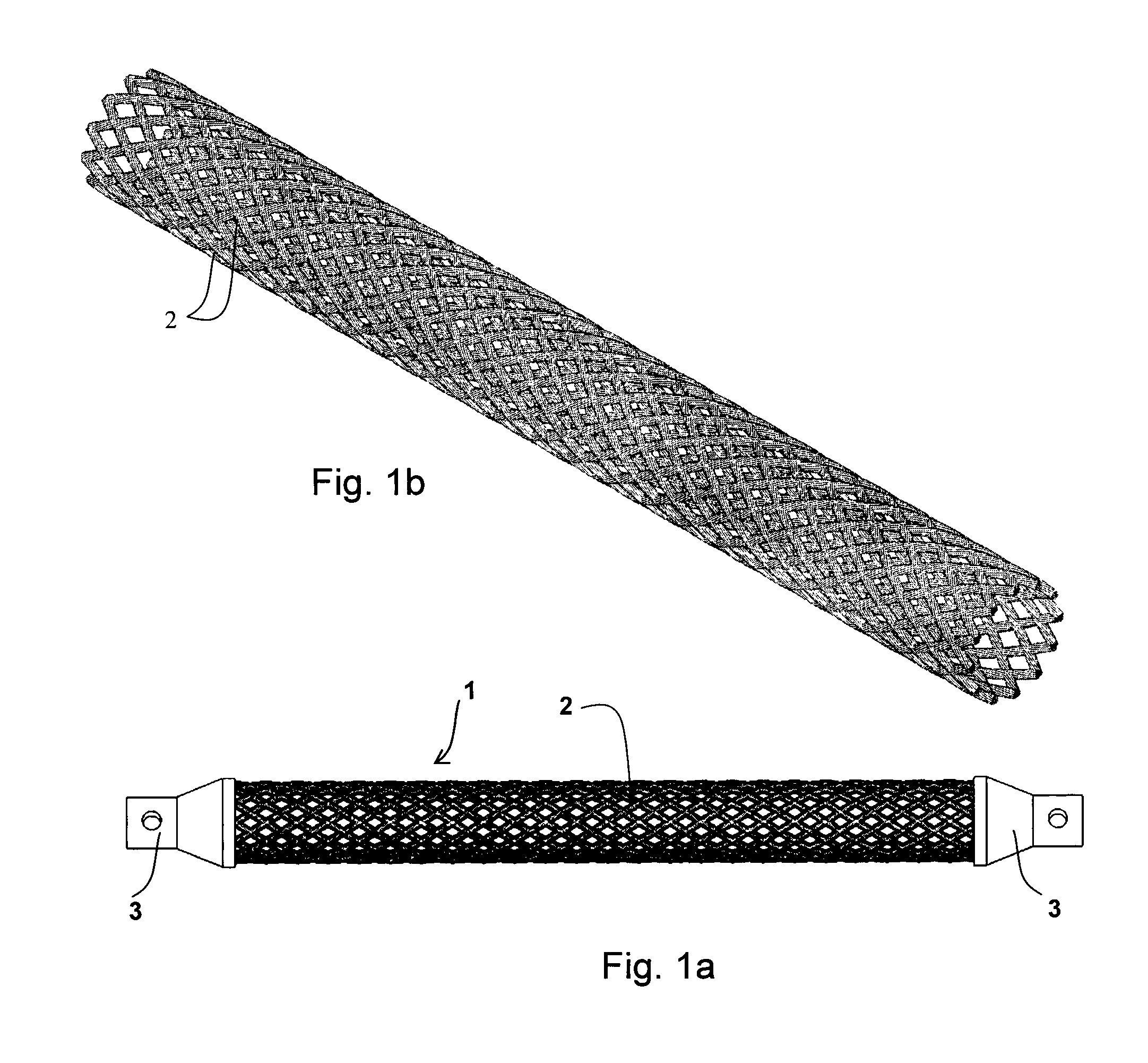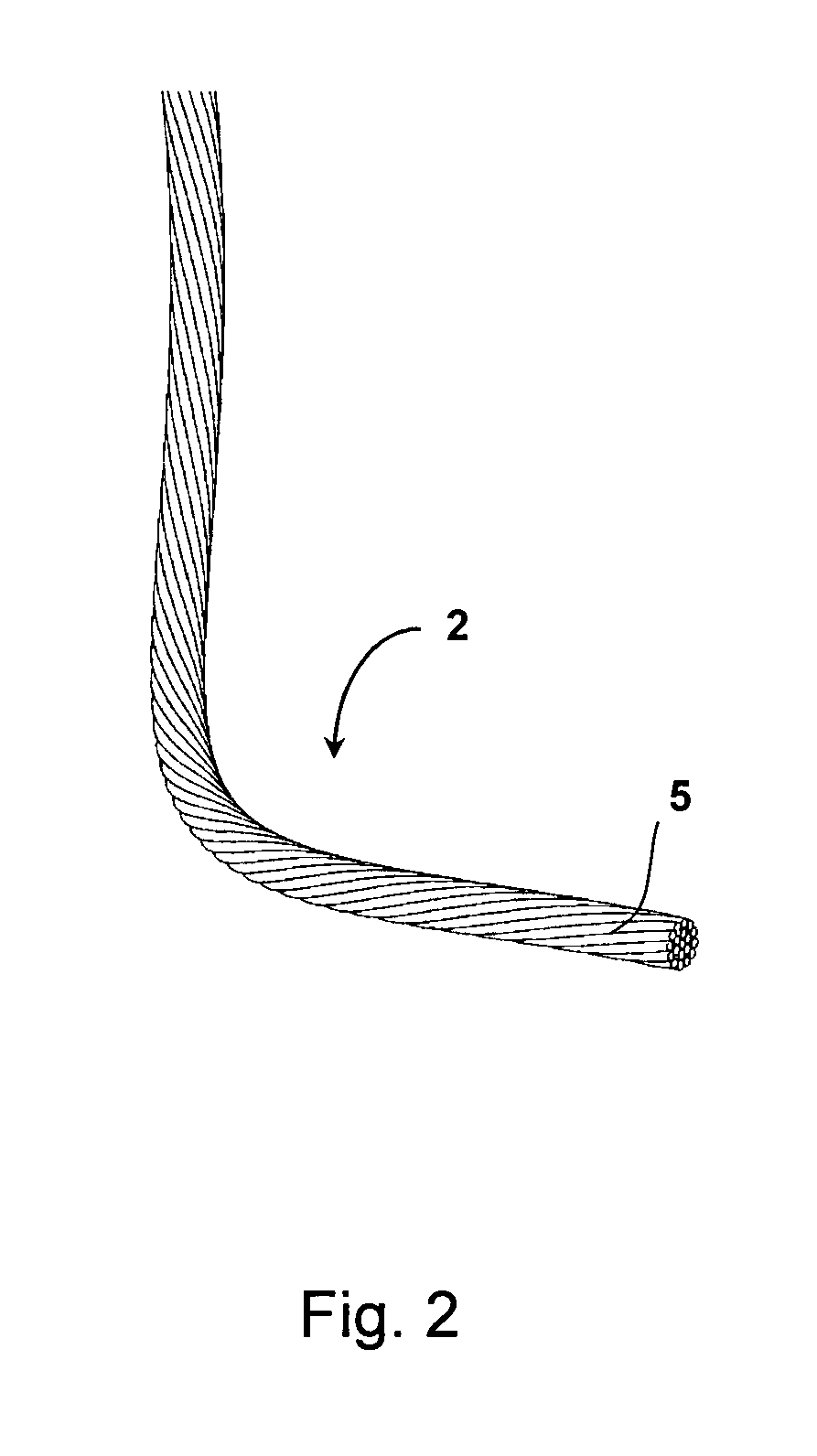Ligament and tendon prosthesis made from cables of filaments
a technology of filaments and cables, applied in the field of medical devices, can solve the problems of ligament damage, loss of some degree of mobility in the donor location, and risk of infection, and achieve the effect of extensive twisting and bending, low resistance to bending
- Summary
- Abstract
- Description
- Claims
- Application Information
AI Technical Summary
Benefits of technology
Problems solved by technology
Method used
Image
Examples
Embodiment Construction
[0026]FIGS. 1a and 1b show a ligament or tendon prosthesis 1 in accordance with one embodiment of the invention. The prosthesis 1 is generally elongated in shape and has an attachment device 3 at one or both ends that is configured to allow an end of the prosthesis 1 to be attached to bone. As shown in greater detail in FIG. 1b, the prosthesis 1 comprises two or more helically shaped cables 2 braided together to form a braided structure having a hollow circular cross section. The number of the cables 2 in the prosthesis 1 may be, for example, from 24 to 96. The cables 2 may be loosely connected at points of contact between the cables in the braided structure.
[0027]FIG. 2 shows the structure of a cable 2 of the prosthesis 1. Each cable 2 of the prosthesis 1 comprises two or more strands 5 that are twisted together into a second helical structure. The number of strands 5 in the cable 2 can be, for example, 3, 7, or 19. The strands 5 may be made from a pseudoelastic alloy such as an im...
PUM
 Login to View More
Login to View More Abstract
Description
Claims
Application Information
 Login to View More
Login to View More - R&D
- Intellectual Property
- Life Sciences
- Materials
- Tech Scout
- Unparalleled Data Quality
- Higher Quality Content
- 60% Fewer Hallucinations
Browse by: Latest US Patents, China's latest patents, Technical Efficacy Thesaurus, Application Domain, Technology Topic, Popular Technical Reports.
© 2025 PatSnap. All rights reserved.Legal|Privacy policy|Modern Slavery Act Transparency Statement|Sitemap|About US| Contact US: help@patsnap.com



